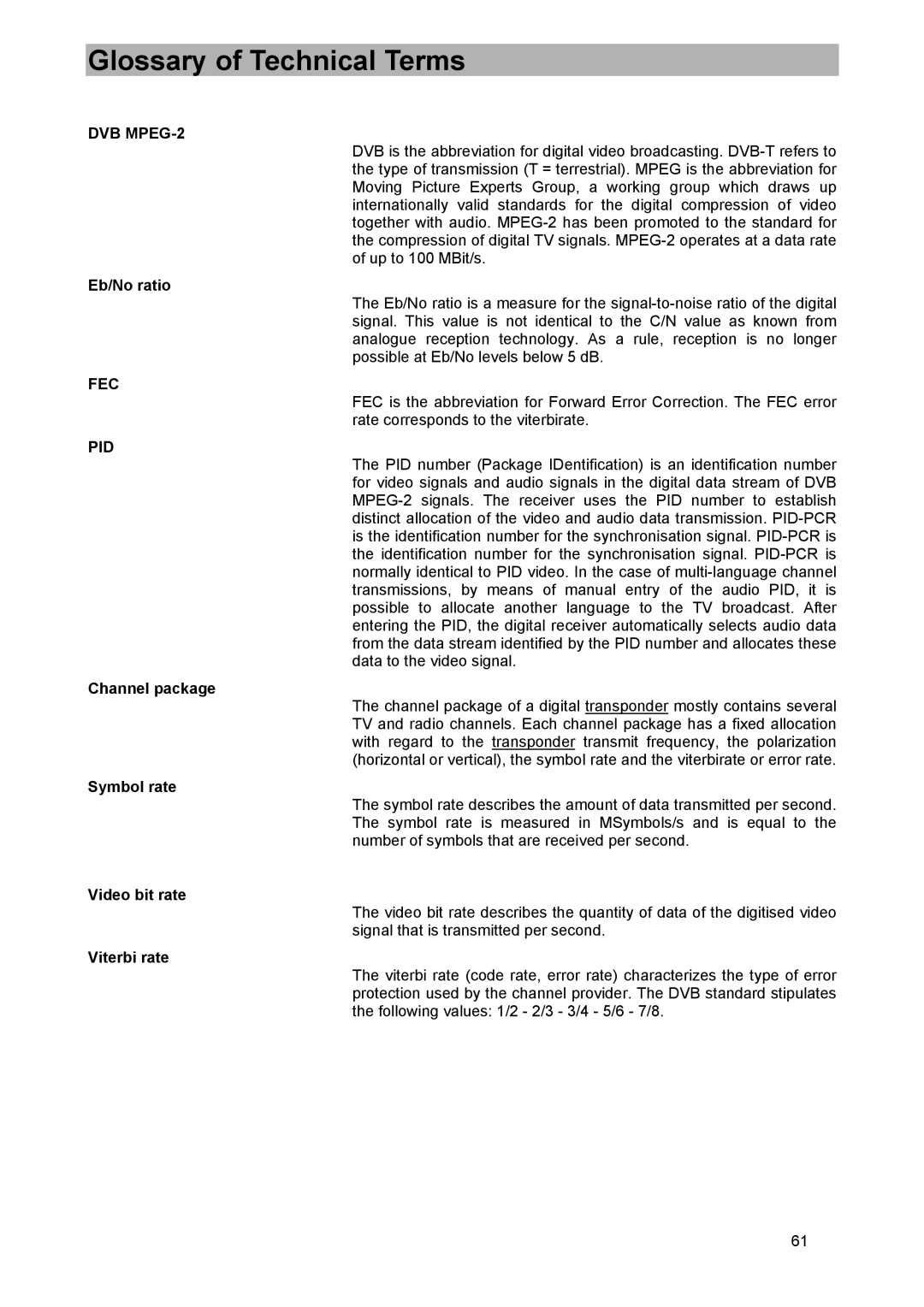Glossary of Technical Terms
DVB MPEG-2
DVB is the abbreviation for digital video broadcasting.
Eb/No ratio
The Eb/No ratio is a measure for the
FEC
FEC is the abbreviation for Forward Error Correction. The FEC error rate corresponds to the viterbirate.
PID
The PID number (Package IDentification) is an identification number for video signals and audio signals in the digital data stream of DVB
Channel package
The channel package of a digital transponder mostly contains several TV and radio channels. Each channel package has a fixed allocation with regard to the transponder transmit frequency, the polarization (horizontal or vertical), the symbol rate and the viterbirate or error rate.
Symbol rate
The symbol rate describes the amount of data transmitted per second. The symbol rate is measured in MSymbols/s and is equal to the number of symbols that are received per second.
Video bit rate
The video bit rate describes the quantity of data of the digitised video signal that is transmitted per second.
Viterbi rate
The viterbi rate (code rate, error rate) characterizes the type of error protection used by the channel provider. The DVB standard stipulates the following values: 1/2 - 2/3 - 3/4 - 5/6 - 7/8.
61
